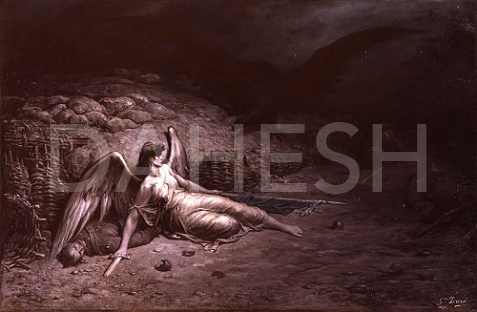The turmoil of 1870–1871—the Franco-Prussian War, the Siege of Paris, and the Commune—upended the lives of many French artists. Artistic circles like the Café Guérbois group were split apart, as Cézanne fled to L’Estaque, Bazille fought and died, and Monet, too old to serve, waited out the conflict in London alongside Charles Daubigny and Jean-Léon Gérôme. Others were brought closer together, such as Georges Clairin and Henri Regnault who hastily returned from North Africa to enlist, though Regnault was later killed at the Battle of Buzenval. Rosa Bonheur, unable to serve because she was a woman, joined a local militia and even went out one night to fire on a Prussian camp. Several notable artists, including Tissot, fled to London after the war because of their involvement in the Commune. The crises in France even touched foreign artists—Lawrence Alma-Tadema donated The Staircase (1870) as a lottery item to a London exhibition benefiting the “Distressed French Peasantry” in German occupied regions.
The events of what Victor Hugo called the “année terrible” (terrible year) left an indelible mark on the French psyche that is evident in many works of art. Gustave Doré painted three massive works that confronted these horrors; The Enigma (1871, Musée D’Orsay), The Defense of Paris (ca. 1871, Francis Lehman Loeb Art Center, Vassar College), and The Black Eagle of Prussia (1871). The topic was deeply personal for Doré who was a native of Strasbourg, a city routed by the Germans early in the conflict, an event which encouraged him to join the National Guard. Ernest Meissonier, who also served in the war—as a superior officer to Manet—painted his own allegory of France’s crushing defeat and Paris’ tragic fall in The Siege of Paris, 1870–1871 (ca. 1884, Museé D’Orsay).
Early public monuments to the war mourned the dead and paid respect to the resilience of those who fought. One of the best known works on this theme was Marius Jean Antonin Mercié’s Gloria Victis (The Glory of the Victim, ca. 1874), which shows an allegorical female figure resembling Nike of Samothrace (ca. 200–190 BC, Louvre), as she carries a vanquished French soldier. By the end of the 1870s Paris had recovered, and the Third Republic began commissioning monuments that glorified both the war and the new government. In 1879 the Prefecture of the Seine, for instance, held a competition for a new monument on the theme of Defense, to be constructed in Courbeville, a site where the French had fought the Prussians. Numerous artists submitted entries, including Auguste Rodin, but the commission went to Louis-Ernest Barrias. His work, The Defense of Paris (1879–80, Rondepoint de la Défense, Paris), acknowledged that though France lost the war, they had fought valiantly and would continue to face their enemies undaunted.





